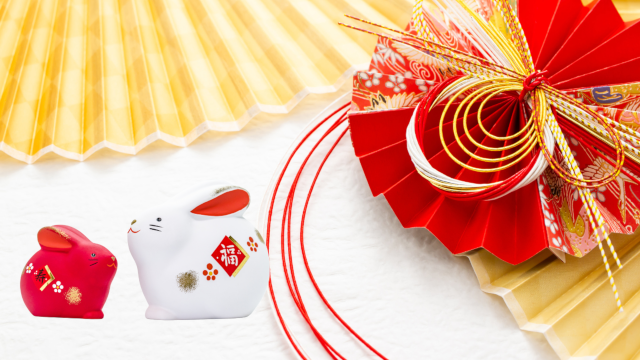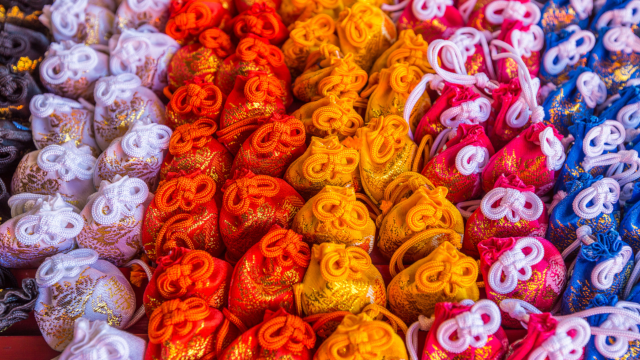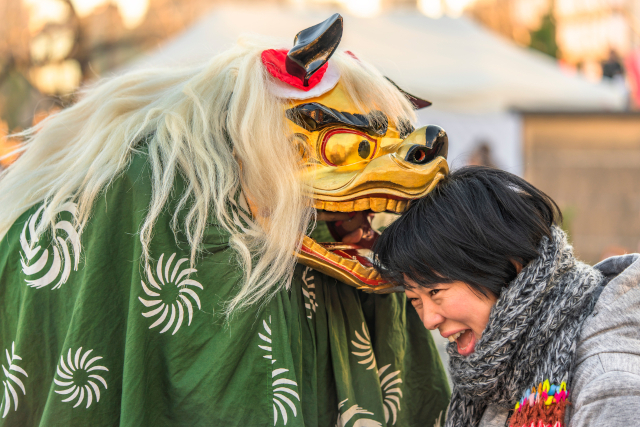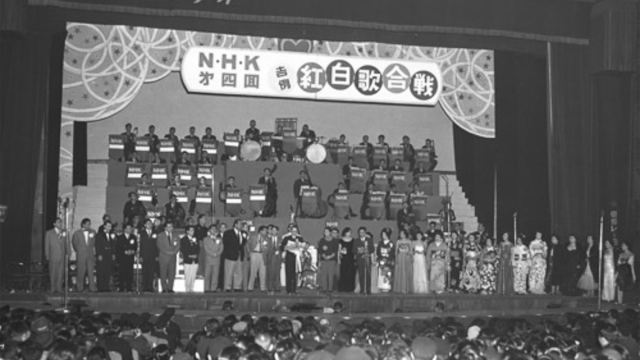Japanese New Year Traditions (Part 3)

Japanese New Year (お正月 oshougatsu) is one of the oldest and most celebrated holidays in all of Japan. Japanese people celebrate New Year’s from January 1st until January 3rd through a variety of unique traditions, customs, and festivals. During this time, millions of people travel to gather with family and visit local shrines and temples to participate in community events and celebrations.
In part 2 of this article, we learned about three Japanese New Year traditions including toshikoshi soba, osechi and kagami mochi.
In the final part, we will learn about three more Japanese New Year traditions.
Japanese New Year (お正月 oshougatsu) is one of the oldest and most celebrated holidays in all of Japan. Japanese people celebrate New Year’s from January 1st until January 3rd through a variety of unique traditions, customs, and festivals. During this time, millions of people travel to gather with family and visit local shrines and temples to participate in community events and celebrations.
In part 2 of this article, we learned about three Japanese New Year traditions including toshikoshi soba, osechi and kagami mochi.
In the final part, we will learn about three more Japanese New Year traditions.
#8: Omamori

During Hatsumode, many people buy special charms known as omamori. These charms frequently come in the form of a silk bag with a piece of wood inside. The sacred prayer message written on this piece of wood is believed to bring good luck while warding off misfortune.
There are several different kinds of omamori, which have different effects and are distinguished by their color and/or design. Some of the most common ones are listed below:
恋愛成就 (ren’ai jouju) – success in romantic relationships
長寿 (chouju) – long life
健康 (kenkou) – health
幸せ (shiawase) – happiness
学業成就 (gakugyou jouju) – academic success
After hatsumode, most people will attach their omamori to their personal belongings, such as their phones, keychains, or bags. In this way, the omamori can continue to bring them fortune until the following year at which point it will often be returned to the shrine/temple staff to be burned as a sign of respect to the gods.
During Hatsumode, many people buy special charms known as omamori. These charms frequently come in the form of a silk bag with a piece of wood inside. The sacred prayer message written on this piece of wood is believed to bring good luck while warding off misfortune.
There are several different kinds of omamori, which have different effects and are distinguished by their color and/or design. Some of the most common ones are listed below:
恋愛成就 (ren’ai jouju) – success in romantic relationships
長寿 (chouju) – long life
健康 (kenkou) – health
幸せ (shiawase) – happiness
学業成就 (gakugyou jouju) – academic success
After hatsumode, most people will attach their omamori to their personal belongings, such as their phones, keychains, or bags. In this way, the omamori can continue to bring them fortune until the following year at which point it will often be returned to the shrine/temple staff to be burned as a sign of respect to the gods.
#9: Shishimai

Shishimai (獅子舞) or Japanese Lion Dance is traditional Japanese performance that occurs during the Japanese New Year at Buddhist temples and Shinto shrines around Japan. During this event, one or more people will dance in lion costumes. The appearance of the lion will vary depending on the location as many variations exist around Japan. In some cases, these lions may be accompanied by Japanese flute and drum players.
The Lion Dance was imported into Japanese culture from China sometime during the Tang Dynasty (690-705) with the earliest record of the Japanese Lion Dance occurring at Todaiji Temple in Nara, Japan in 752.
In ancient times, the Japanese Lion Dance was performed to bring a good harvest, prevent famines, and ward off evil spirits. Nowadays, the Japanese Lion Dance is seen as a sign of good luck for the upcoming year. In Japanese culture it is said that when the lion bites you on the head it eats the evil spirits and brings good fortune. Due to this, many people will lower their heads to the lion hoping to receive a lucky bite.
Shishimai (獅子舞) or Japanese Lion Dance is traditional Japanese performance that occurs during the Japanese New Year at Buddhist temples and Shinto shrines around Japan. During this event, one or more people will dance in lion costumes. The appearance of the lion will vary depending on the location as many variations exist around Japan. In some cases, these lions may be accompanied by Japanese flute and drum players.
The Lion Dance was imported into Japanese culture from China sometime during the Tang Dynasty (690-705) with the earliest record of the Japanese Lion Dance occurring at Todaiji Temple in Nara, Japan in 752.
In ancient times, the Japanese Lion Dance was performed to bring a good harvest, prevent famines, and ward off evil spirits. Nowadays, the Japanese Lion Dance is seen as a sign of good luck for the upcoming year. In Japanese culture it is said that when the lion bites you on the head it eats the evil spirits and brings good fortune. Due to this, many people will lower their heads to the lion hoping to receive a lucky bite.
#10: Kohaku Uta Gassen

Kohaku Uta Gassen (紅白歌合戦) is an annual TV special produced and broadcast by the NHK (Nippon Hoso Kyokai) on New Years’ Eve in Japan. During this 4 hour live event, over 40 popular musical groups and singers from across Japan participate in a male versus female singing competition. At the end of the show, viewers can vote for their favorite team: Red Team (Female) or White Team (Male), via internet connection from their electronic devices. The team with the most votes is declared the winners.
Kohaku Uta Gassen is extremely well known in Japan and enjoyed by tens of millions of Japanese people every year with the 73rd annual broadcast having occurred on December 31st, 2022. Event participation is strictly by invite only with the NHK selection committee sending invitations to popular upcoming artists, as well as famous groups and singers. The final show lineup will include a variety of music styles and genres such as idol groups, J-pop, enka (traditional Japanese music), alternative rock and more. It’s quite common for trending anime songs to be performed at the show.
Right after the Kohaku Uta Gassen TV special, many Japanese will travel to their local Shinto shrine or Buddhist temple for Hatsumode (First New Years’ Visit to Temple/Shrine). Due to this, shrines and temples can be extremely crowded and congested at this time
Kohaku Uta Gassen (紅白歌合戦) is an annual TV special produced and broadcast by the NHK (Nippon Hoso Kyokai) on New Years’ Eve in Japan. During this 4 hour live event, over 40 popular musical groups and singers from across Japan participate in a male versus female singing competition. At the end of the show, viewers can vote for their favorite team: Red Team (Female) or White Team (Male), via internet connection from their electronic devices. The team with the most votes is declared the winners.
Kohaku Uta Gassen is extremely well known in Japan and enjoyed by tens of millions of Japanese people every year with the 73rd annual broadcast having occurred on December 31st, 2022. Event participation is strictly by invite only with the NHK selection committee sending invitations to popular upcoming artists, as well as famous groups and singers. The final show lineup will include a variety of music styles and genres such as idol groups, J-pop, enka (traditional Japanese music), alternative rock and more. It’s quite common for trending anime songs to be performed at the show.
Right after the Kohaku Uta Gassen TV special, many Japanese will travel to their local Shinto shrine or Buddhist temple for Hatsumode (First New Years’ Visit to Temple/Shrine). Due to this, shrines and temples can be extremely crowded and congested at this time
Copyright © 2024 Little Book of Japan
